URWERK EMC Time Hunter Desert Sage – Sir, Yes, Sir!
Kitted out in matte beige with a camo strap, the EMC Time Hunter is combat-ready for warriors in the battle of precision.
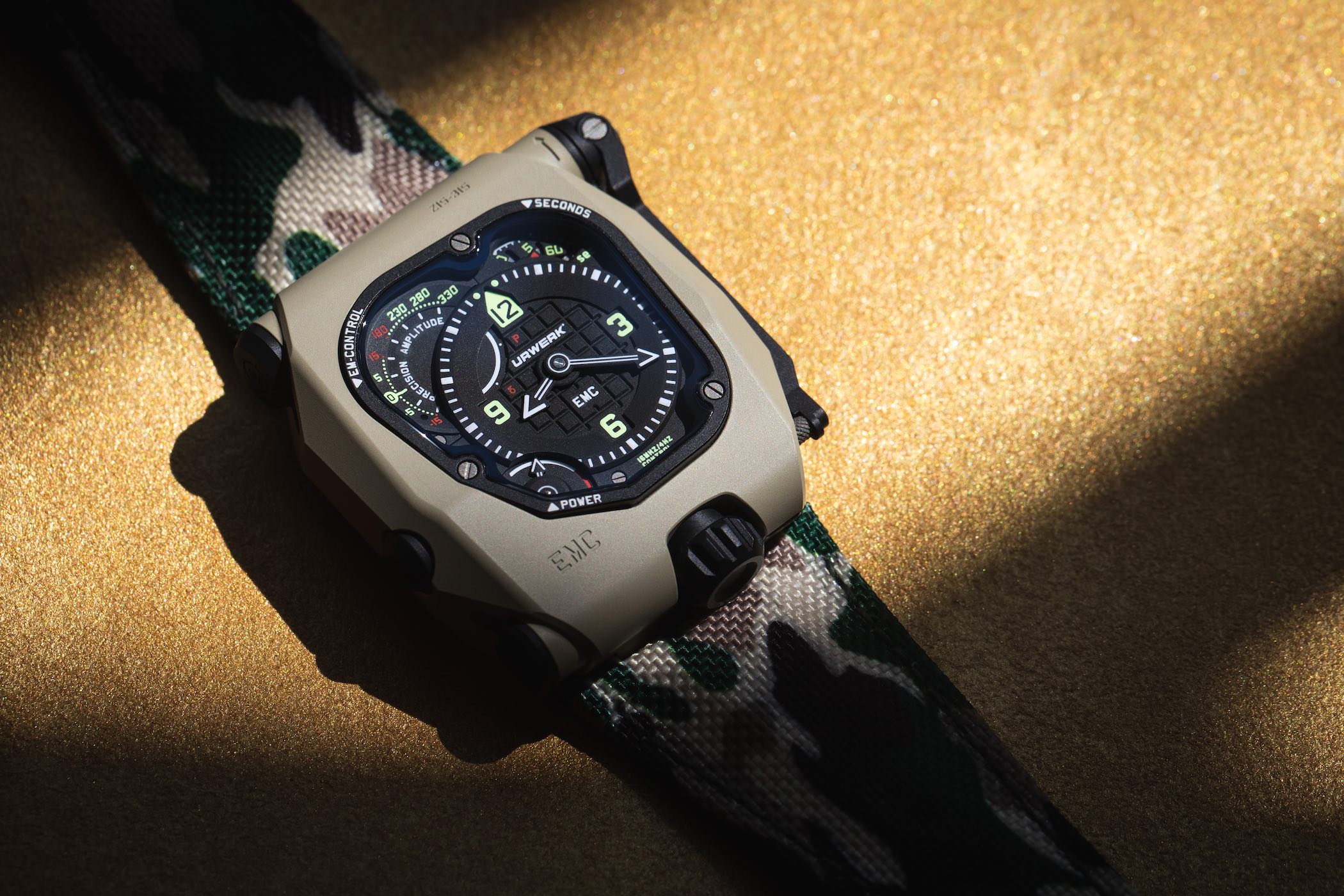
URWERK’s EMC Time Hunter, the world’s first watch that lets you adjust the precision and gauge the amplitude of the balance, is decked out in military gear and primed for action. Tougher than ever, the new EMC Time Hunter Desert Sage features a ceramic-type lacquer treatment on the case resulting in a matte beige surface complete with a gritty sandblasted finish. Combined with the black grenade dial and military camouflage strap, this watch would have looked the part during Operation Desert Storm. Let’s get to know more about URWERK’s latest take on the EMC Time Hunter Desert Sage.
To boldly go where no man (watchmaker) has gone before
Urwerk is renowned for its out-of-this-world approach to watchmaking. Looking at URWERK’S watches means abandoning all concepts of conventional watchmaking. From the futuristic cases to the creative ways of displaying time, designer Martin Frei and master watchmaker Felix Baumgartner were convinced there had to be another way of presenting time and, since 1995, embarked on their 21st-century watchmaking odyssey.
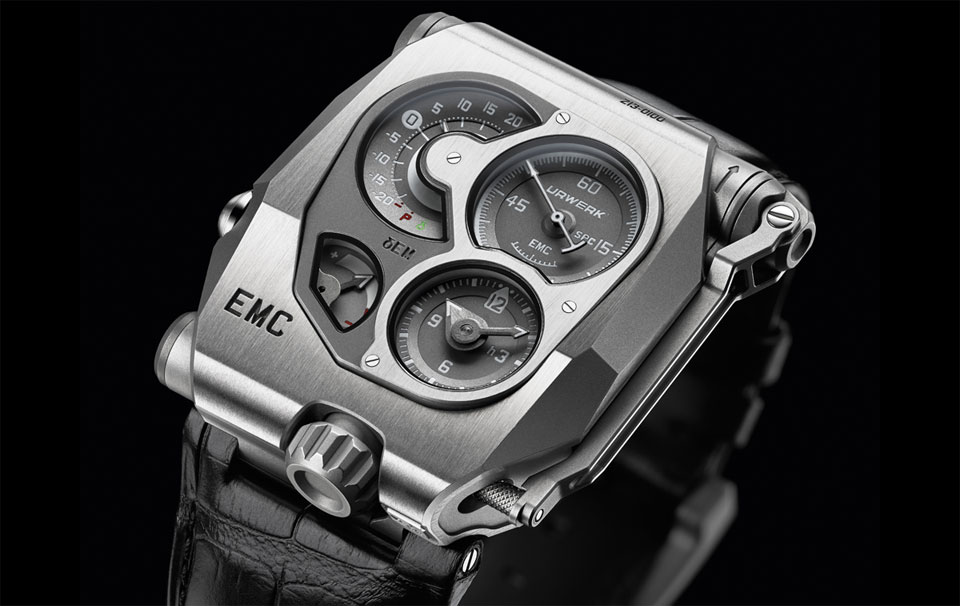
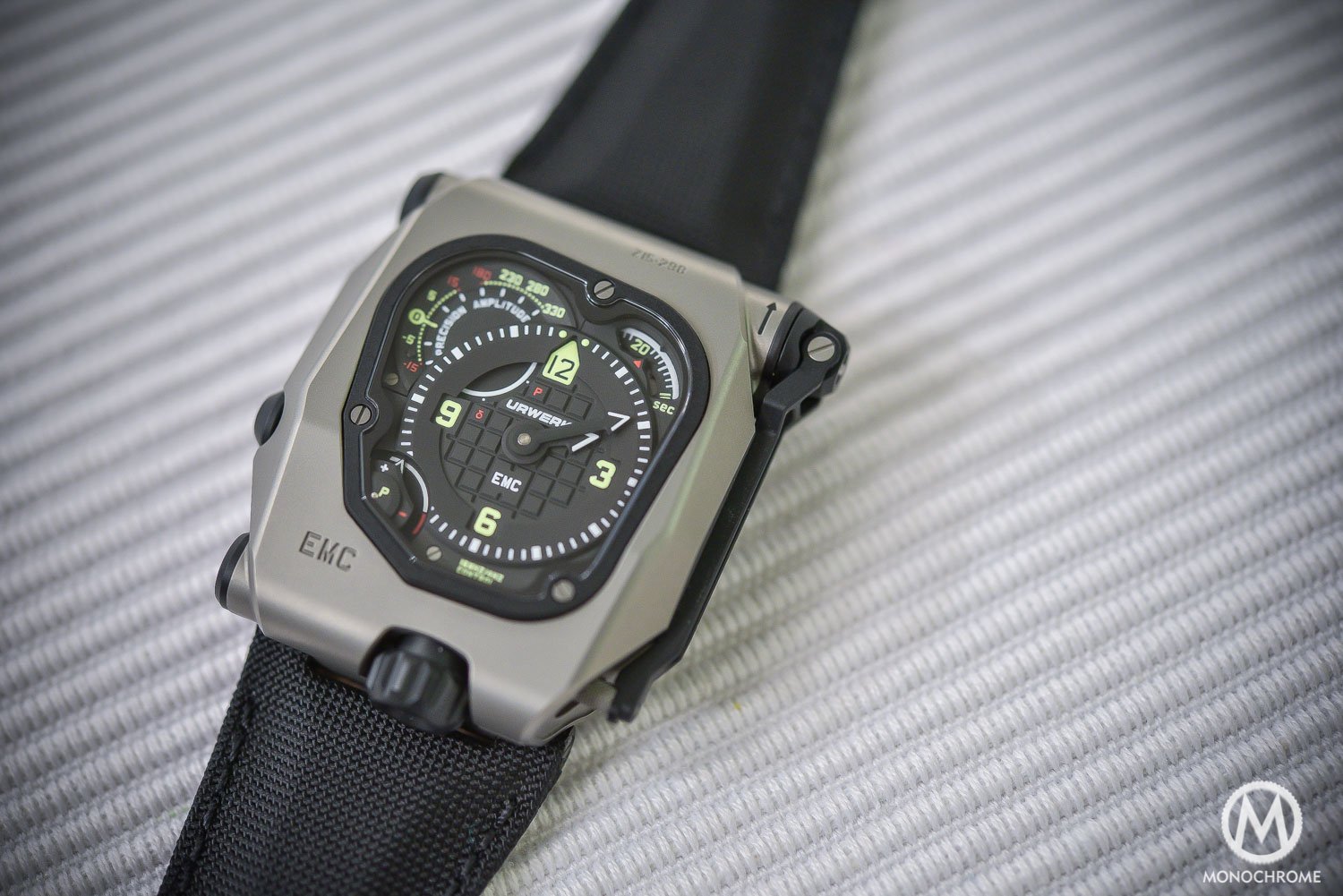
This year alone we’ve seen the UR-100 Space Time with its rotating satellites, the UR-111C with its linear time display and the Final Edition of the iconic UR-210. As fascinating as these watches are, with their unconventional way of displaying the time, they cannot be compared to the EMC Time Hunter. With an innovative hybrid movement mixing a manual-winding mechanical heart and an electro-optical circuit with its own power source, the EMC Time Hunter is a unique, interactive watch that lets its wearer manually adjust the rate of the balance wheel.
The genesis of Electro-Mechanical Control
In May 2013, Frank wrote an article about URWERK’s ‘concept’ movement that would allow users to measure the running rate of the watch and adjust it to optimal precision. Known as Electro-Mechanical Control (EMC), Felix Baumgartner’s brainwave was to create a hybrid movement with mechanical and electronic parts. An optical sensor placed on top of the balance wheel (made of non-magnetic ARCAP) times the oscillations for three seconds to calculate an average rate. The optical sensor is connected to an integrated circuit board (the electronic part of the EMC), which in turn calculates the minuscule differences in the semi-oscillations and translates them into loss/gain of seconds per day. The really fun part of the whole set-up is the independent generator feeding the micro-circuit. Instead of using a battery, the power is supplied by a hand-turned Maxon generator, a retractable lever that is cranked, like an old car. The processor, which operates at a hyper-precision frequency of 16 MHz and serves as a reference oscillator (benchmark) can compare the amplitude and rate deviation readings of the balance and communicate them to the counter on the dial.
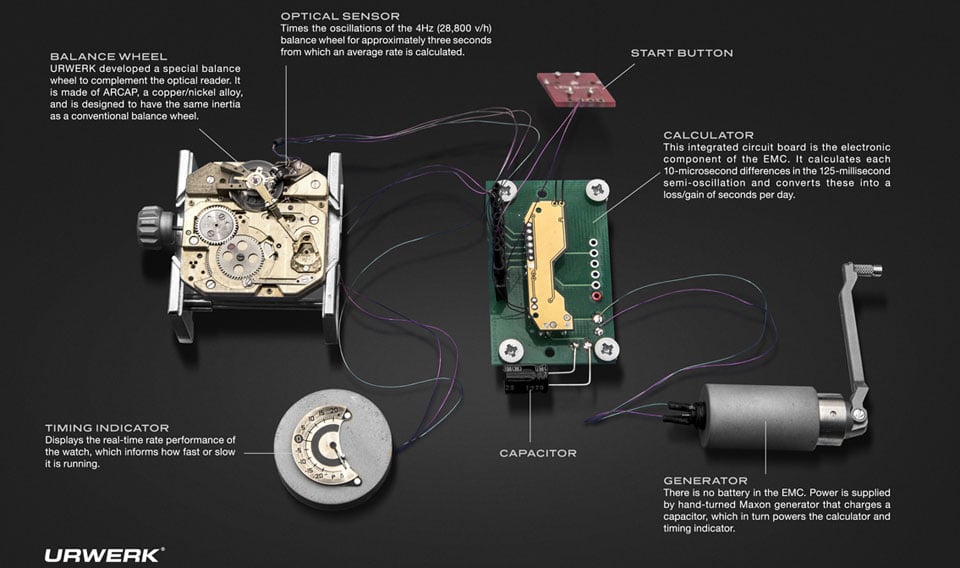
The idea behind Baumgartner’s invention was to provide the owner of the watch with information that in normal conditions, only a watchmaker can visualise. He wanted to create “a precision timepiece with a system whereby the owner can accurately calculate the timing rate of the movement so that it can be finely adjusted to the owner’s lifestyle and habits”. Just three months after Frank’s coverage of the EMC, the concept was integrated into a watch designed by Martin Frei, a formidable 51mm x 43mm titanium case with several portholes on the hood displaying the time and the all-important precision/amplitude gauge. In 2016, Brice reviewed the refreshed version of the EMC Time Hunter with a different layout and even a skeletonised version of the watch known as the EMC Time Hunter X-Ray. The latest Time Hunter Desert Sage model has exactly the same layout, movement and size as these 2016 models but features a new sandy beige sandblasted case.
Battle rattle
The proportions of the watch are XXL: 43mm wide x 51mm length x 15.8mm thick. In short, you’re looking at a mini tank on the wrist, but that is very much a part of its instrument-watch identity. After all, it was conceived as a dual measuring instrument; one instrument to read the hours, minutes and seconds and another instrument to adjust the precision and gauge the amplitude of the balance.
The shape of the case is vaguely rectangular with sloping edges that curve down to shield the movement. The ‘shield’ or hood is made from stainless steel which is micro-beadblasted and then given a hard, matte ceramic lacquer-type treatment. The result is a very cool grainy beige surface that doesn’t reflect the light and is easy to grip, very much in the spirit of military equipment. The black handle on the right side of the case is the retractable crank to manually power up the monitoring unit (optical sensor and computer) and, as in previous editions, is made by the Swiss company Maxon, which also develops motors for NASA’s Mars rovers. The black button on the left side of the case is used in conjunction with the crank and the crown to wind the movement is positioned at 6 o’clock.
The dial is also matte black and, like the case, has an amorphous shape, which could be described as a sort of rounded hexagon with an indented area on the left side? The hours and minutes counter occupies most of the central space and has a chequered hand grenade background and four large luminous Arabic numbers at 12, 3, 6 and 9 o’clock and a bold white minutes track. There are two unusual markings on the black grenade background; a δ just to the right of 9 o’clock, and a P under 12 o’clock (explained below).
The arrow-tipped hands are outlined in white lume, ensuring legibility in any light conditions. The seconds are relayed in an arched aperture in the top right-hand corner, picked out in green lume and indicated with a red arrow. Diagonally across from the seconds is another semi-circular counter for the power reserve indicator, also indicated by an arrow-tipped hand with white lume signalling how much juice is left in the 80-hour tank. Unlike earlier models, URWERK has printed the three additional indications in white on the black screwed bezel: Seconds, Power and EM-Control.
The main attraction of this watch is tucked in the upper left segment of the watch and looks a bit like a speedometer with an arched track corresponding to the Precision rating of the watch running from -15 to 15, and the Amplitude rating ranging from 180 to 330 degrees. The numerals are painted with fluorescent green Super-LumiNova except for the ‘danger zone’ numerals in red at -15, +15 for the Precision and 180 for the amplitude. As you can see, it is a technical watch that will appeal to the watch geek in many of you and that fits URWERK’s philosophy of interaction to a tee.
It’s in your hands
Interaction is a big theme at URWERK inviting owners to interact (fiddle) with their watches as much as possible. The name ‘Time Hunter’ is apt and refers to the watch’s ability to offer its owner a true ‘time hunting experience’. Instead of having to take the watch to a watchmaker to fine-tune the precision or to determine if the amplitude is within reasonable limits, the Time Hunter lets you become the sole master of precision. And if you are picturing all sorts of strange contraptions and tools, you’d be wrong. All you have to do is extract the lever, wind the crank, press the button on the left side of the watch and see whether the hand indicates δ (processing underway) or P (not enough power, which means you need to wind the handle again).
The precision hand will then move anywhere along the -15/+15 scale and indicate the current precision followed by the amplitude of the balance relayed on the 180-330 degree scale. There is also a red LED light on the precision display that will glow green for ‘ok’ and red if one of the EMC indications falls outside acceptable parameters. To tune the watch to optimal functionality, all you have to do is turn the screw on the black bezel of the caseback – indicated below an arrow and the words Fine Tuning. By turning the screw, you are effectively modifying the length of the regulating balance spring.
Mechanical/Electronic hybrid Calibre UR-EMC2
The reverse side, which is made from Grade 5 titanium, reveals a large window on the hybrid movement. On the far left is the grey-coloured balance wheel made of an anti-magnetic alloy (ARCAP) with the optical sensor. On the right is the double vertical barrel providing a robust 80-hour power reserve to the movement, and to the far right is the electronic circuit board partially concealed under a metallised grille pattern on the crystal. The finishes correspond to classical Haute Horlogerie touches like Côtes de Genève stripes on the plate, snailing, micro-bead blasting and bevelled screw heads The manual-winding movement, which was designed, developed and produced by URWEK, has a Swiss lever escapement and beats at 4Hz frequency.
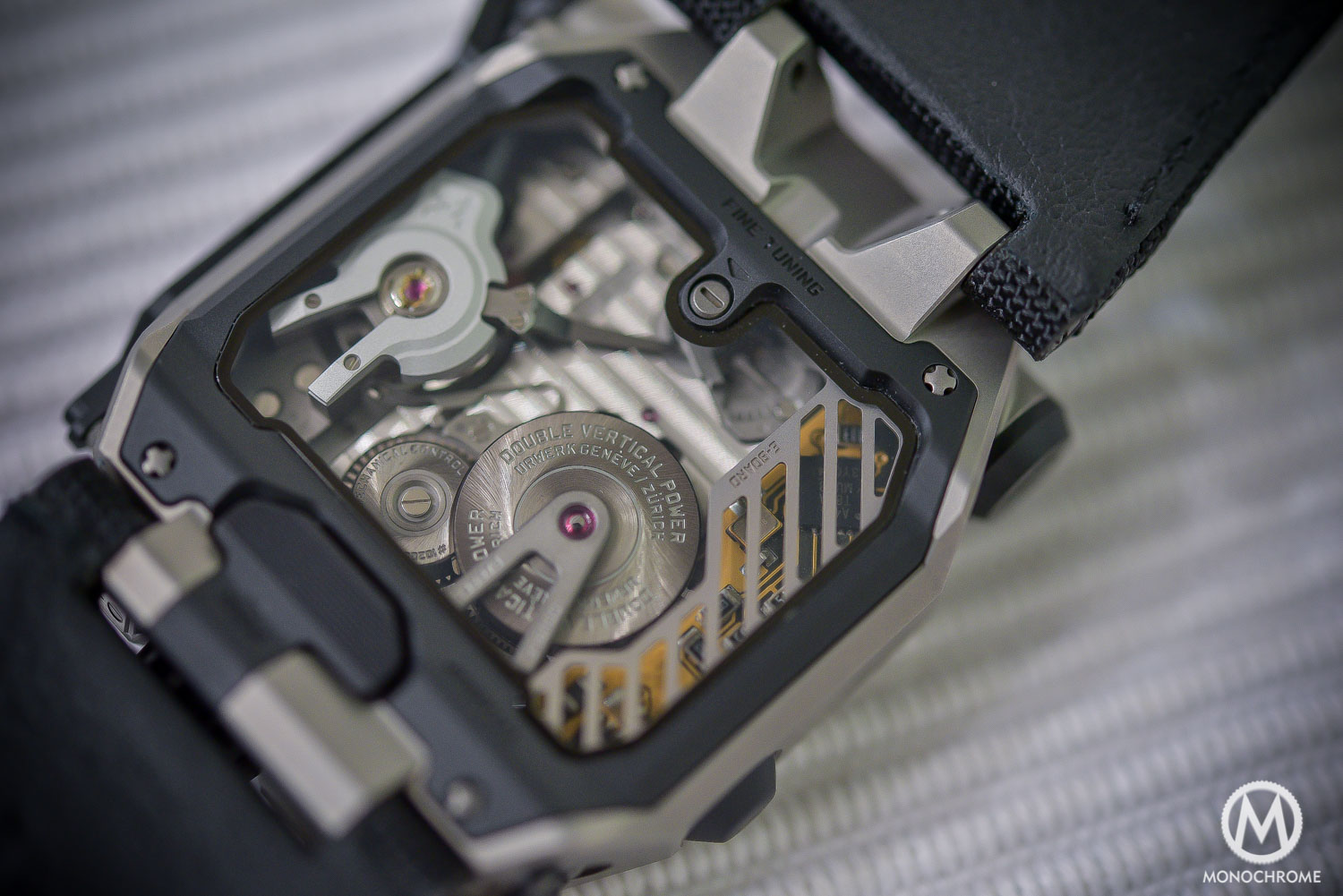
Availability and price
The URWERK EMC Time Hunter Desert Sage is a five-piece edition and retails for CHF 115,000 (not incl. tax).
For more information, please visit urwerk.com.

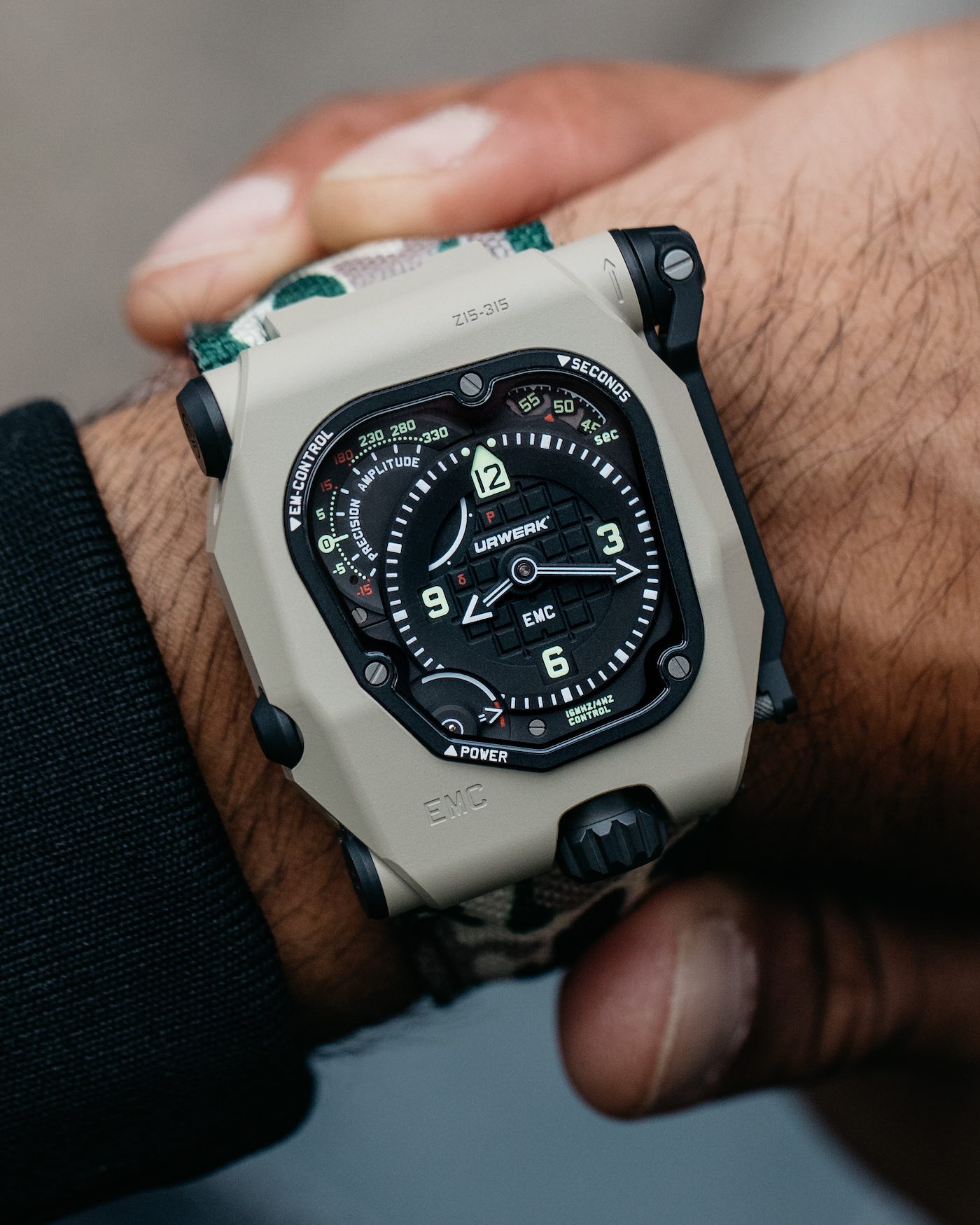
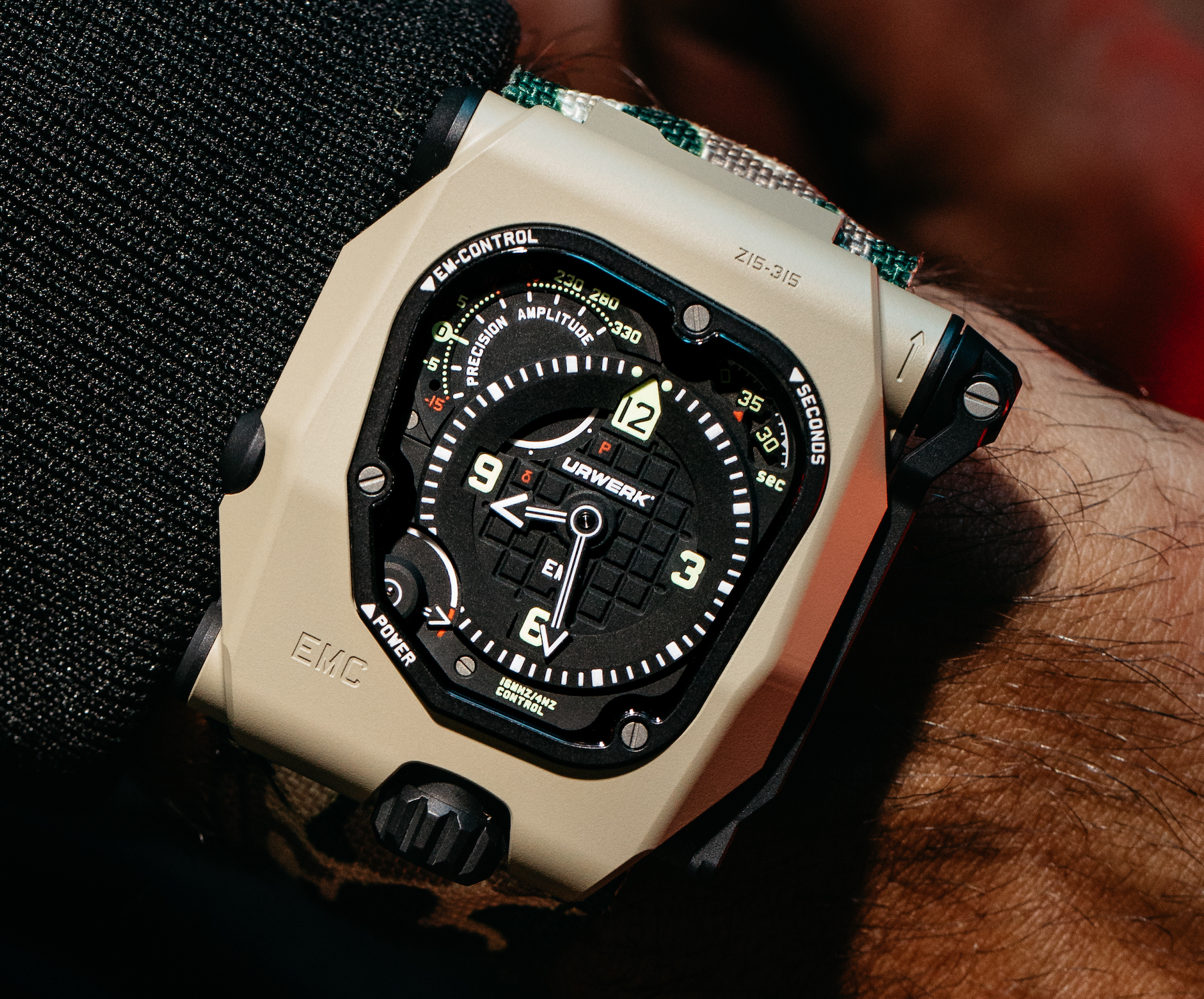
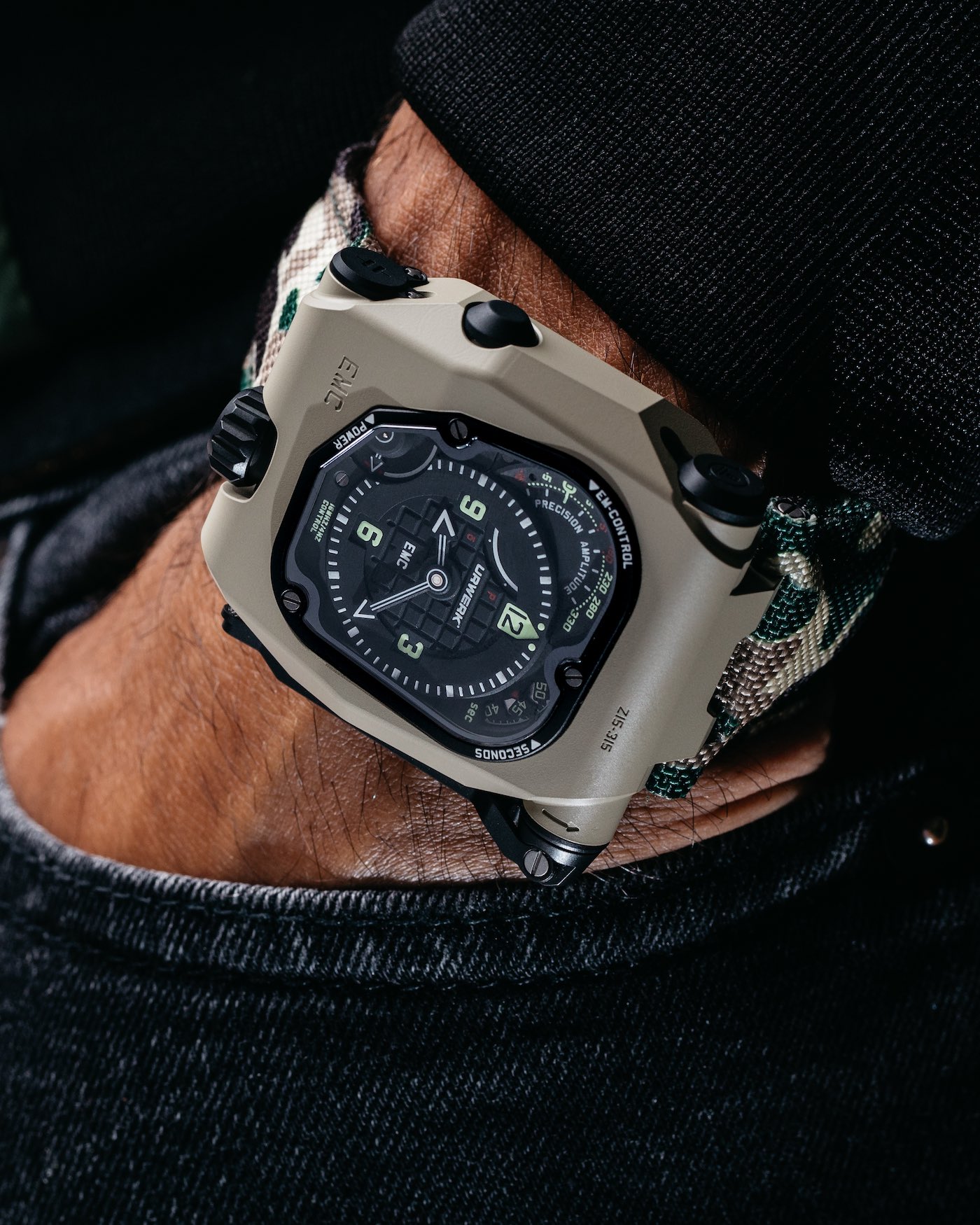
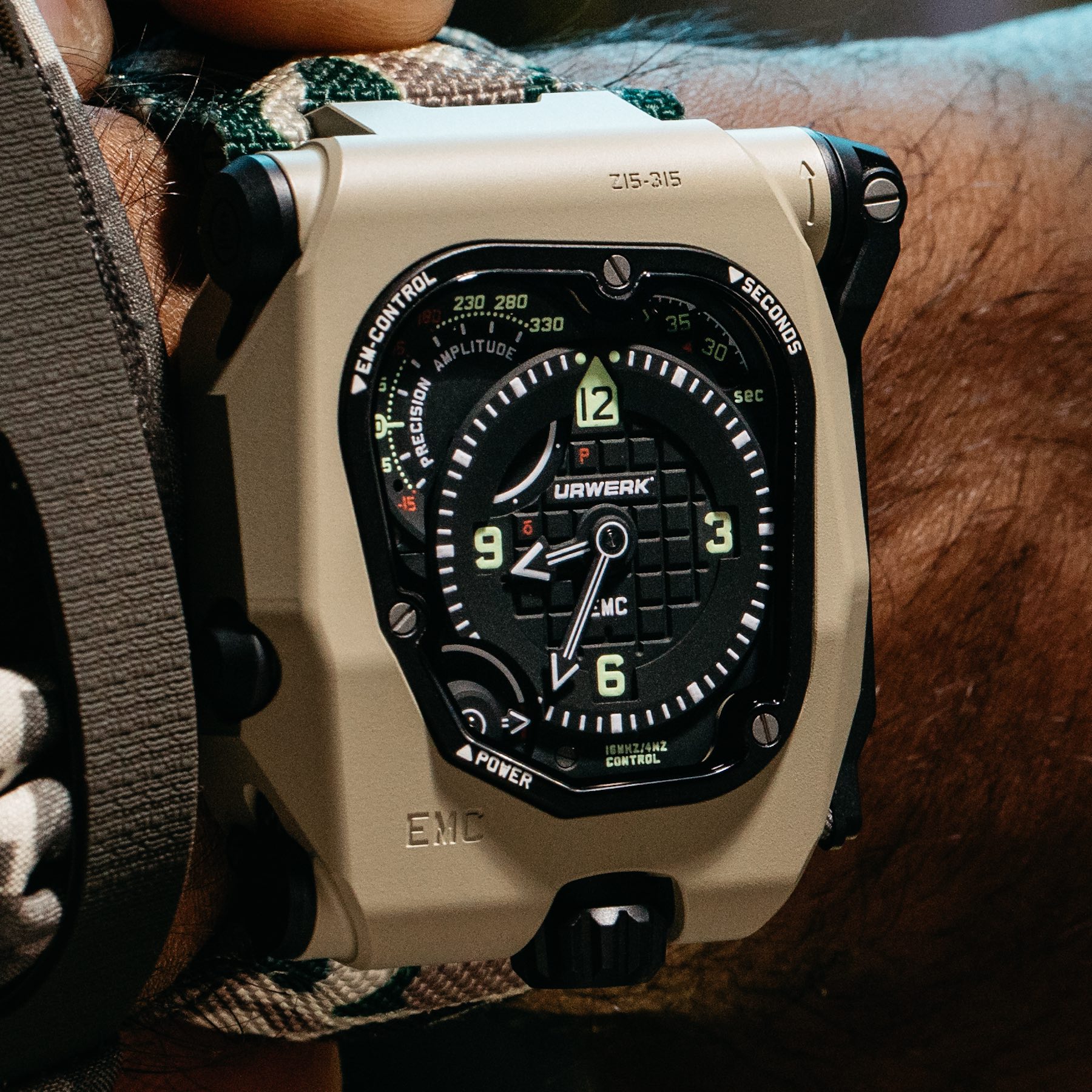
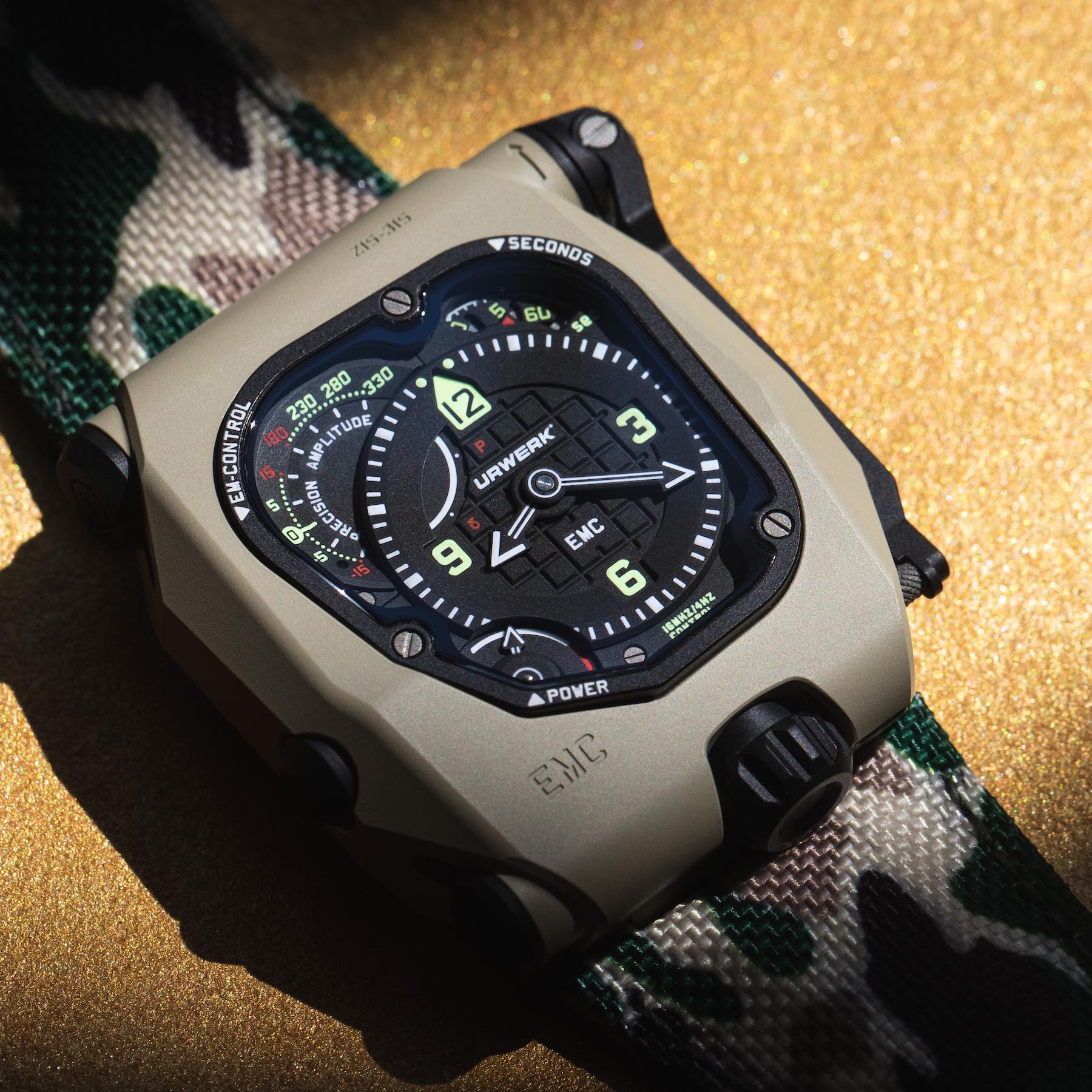
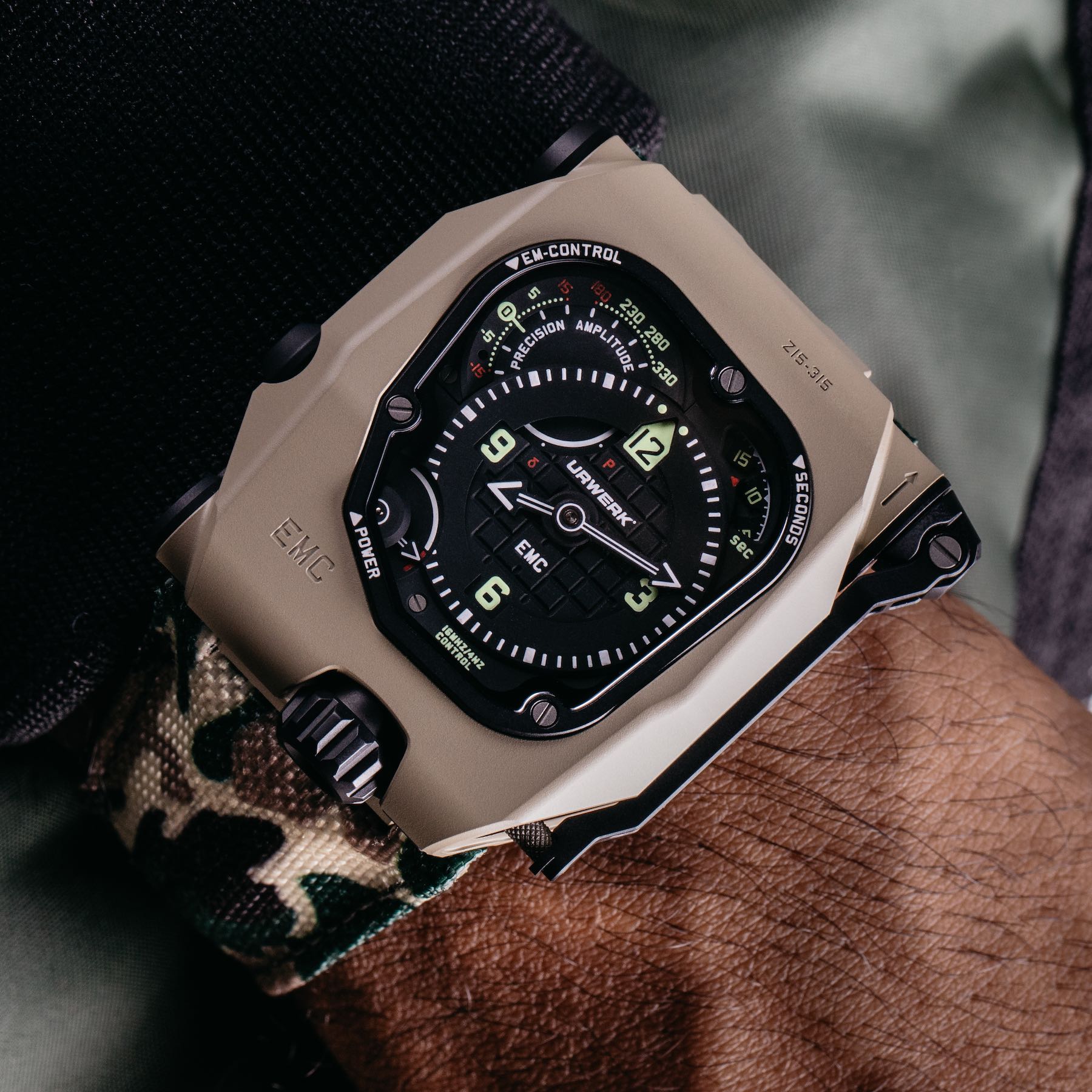
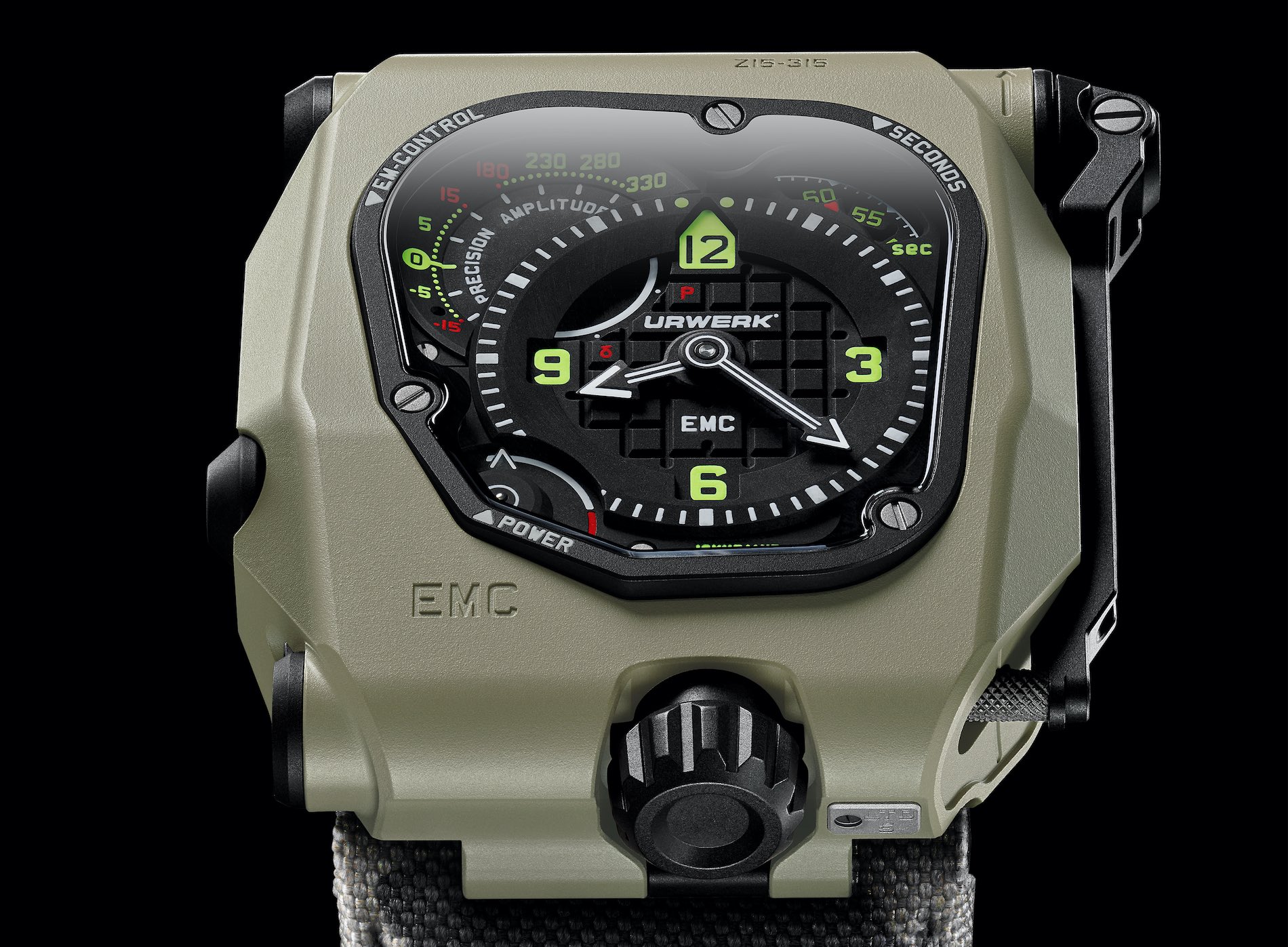
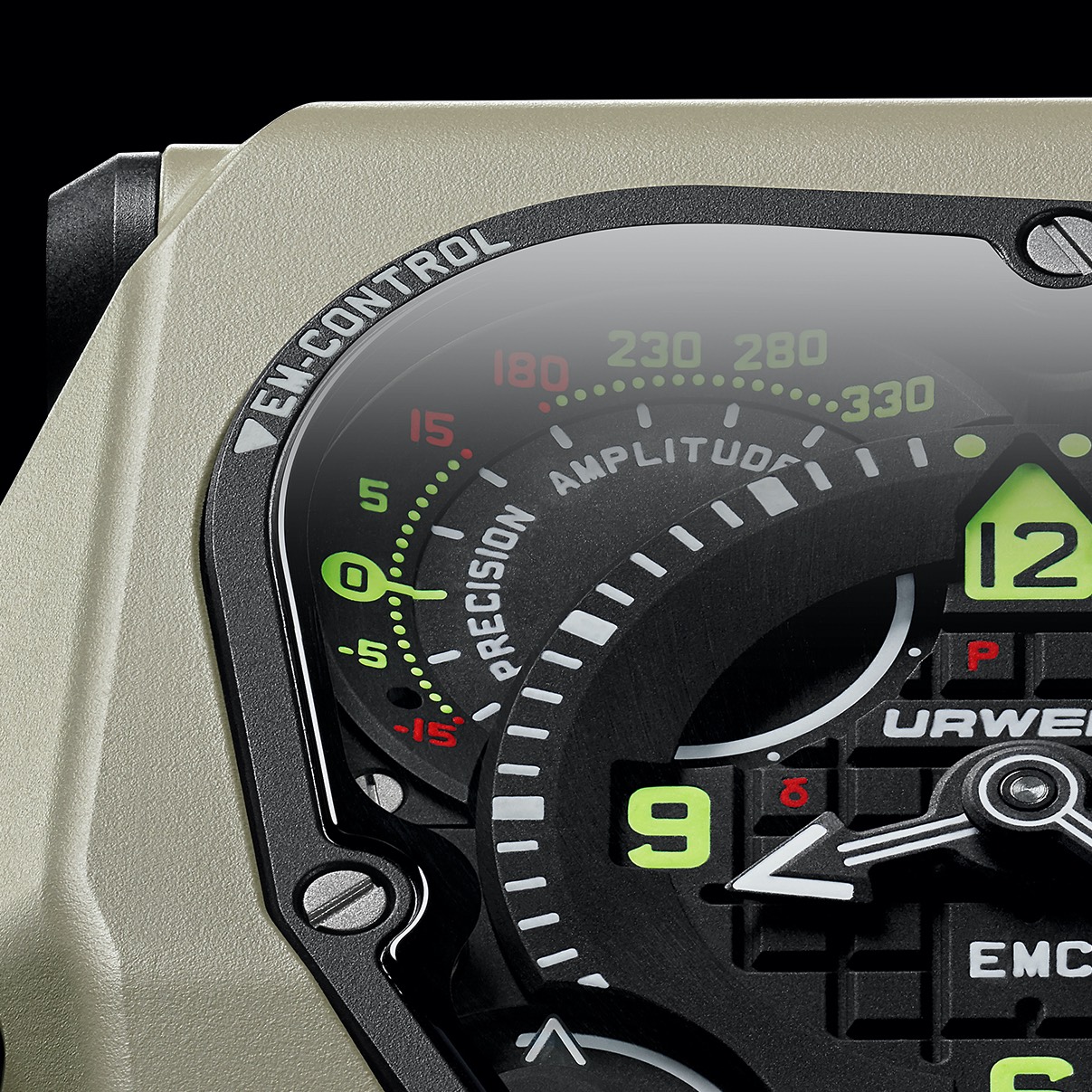
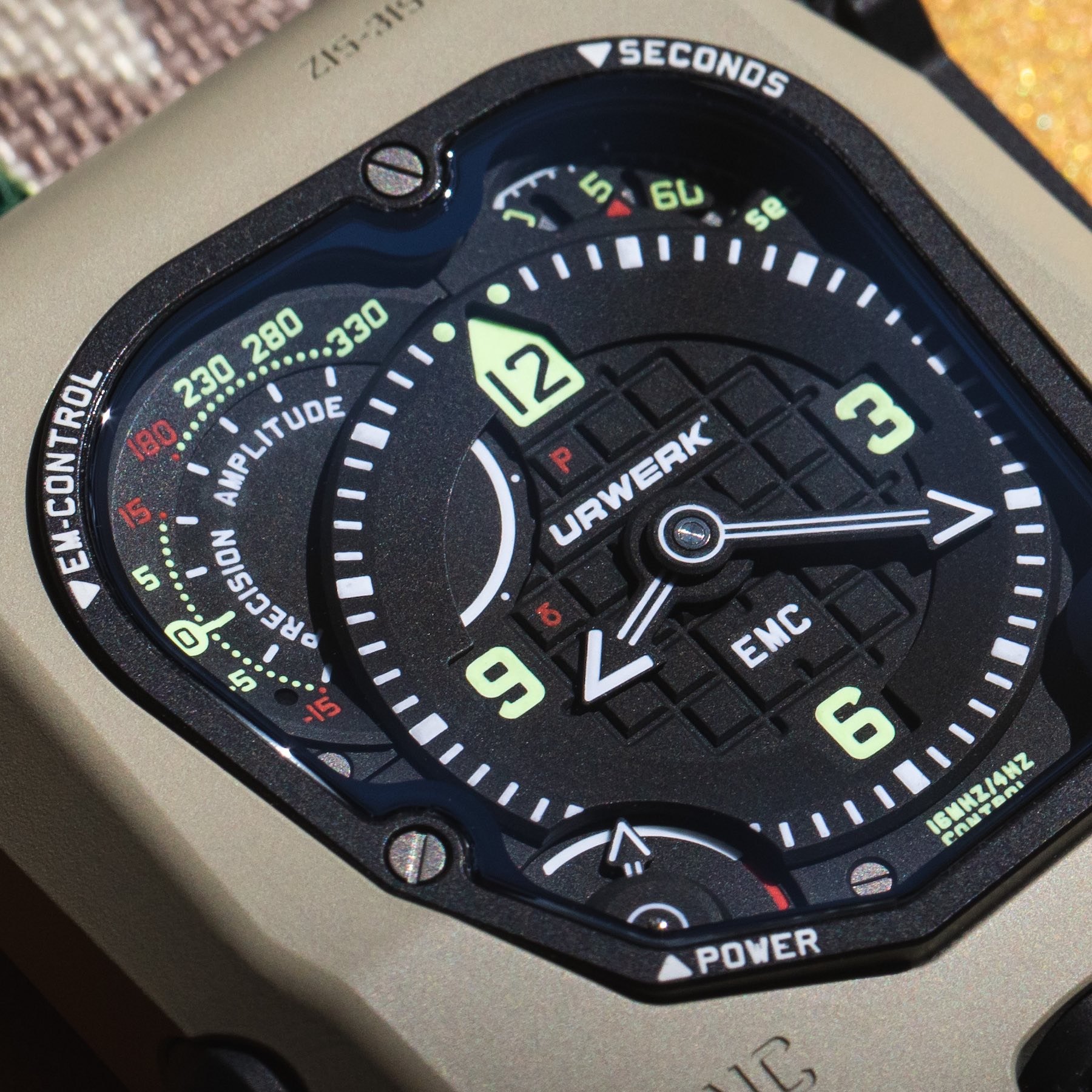



1 response
It’s different, and well it’s cheap enough. Money is no object in the watch market lately.